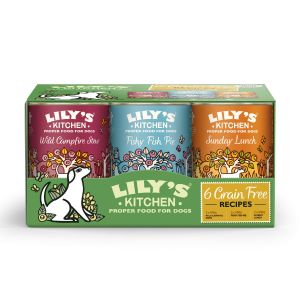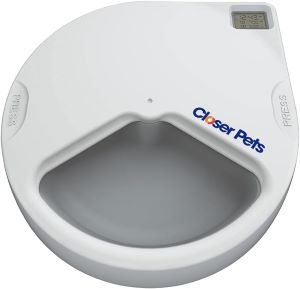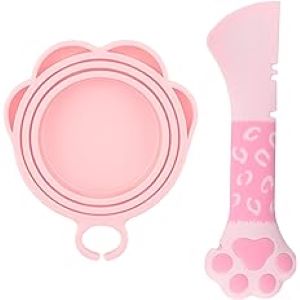Dogs are our ever-loyal and compassionate companions. We always strive to provide them with the best care, we try to provide the best food available too.
It is important to feed dogs a diverse, healthy, and nutritious diet. That’s why whenever we stand in the food aisle we find ourselves clueless about how much wet food to feed a dog.
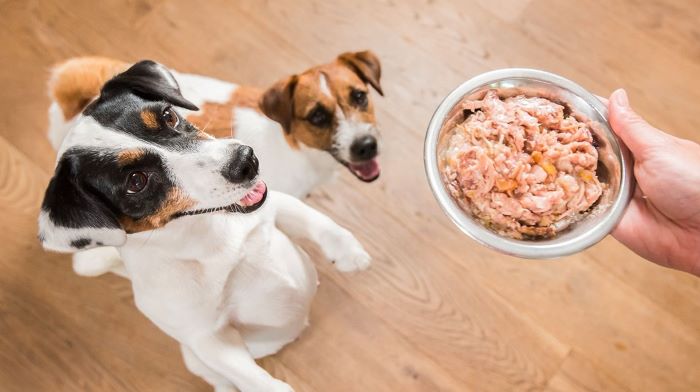
Let’s dive into the food world for our canine companion. Understand the benefits of wet foods and how to feed them.
You Might Also Like:
Why Should I Feed Wet Food to My Dog?
Feeding wet foods to your dog offers a wide variety of benefits, Here are some of them[1]:
- Palatability: Just like humans, dogs too find food with different textures and aromas appetizing. This makes it easier to feed dogs that are picky and choosy.
- Easier to chew: Foods that are easier to chew are easy on the stomach hence good choices for dogs.
- High water content: Wet foods have high water content which keeps dogs hydrated for long periods of time. Making sure that other organs work in a balance.
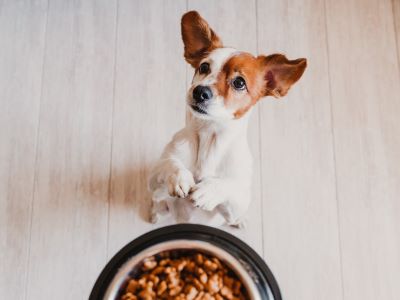
- Less carbohydrates: Wet foods offer a balance of ingredients, less carbohydrates, and the right amount of vital nutrients, making them a great choice for various dietary needs, including hypoallergenic dog food for sensitive dogs.
- Long shelf life: Most wet foods will have a shelf life that ranges from 2 to 5 years unopened, but opened cans of dog food generally last anywhere from 5 to 7 days in the refrigerator once opened.
How Much Wet Food to Feed a Dog?
There is not one universal answer to how much wet food to feed your dog, so it depends on each dog’s size, breed, nutritional needs, weight, and activity levels.
The following is the AAFCO Dog Food Nutrient Profile:
- Protein: 18% and further broken down amino acids.
- Fat: 5.5% and other Minerals such as calcium, sodium, chloride, magnesium, iron, copper, manganese, zinc, and iodine.
- Vitamins: vitamin A, vitamin D, vitamin E, thiamine, riboflavin, pantothenic acid, niacin, pyridoxine, folic acid, vitamin B12, and choline.
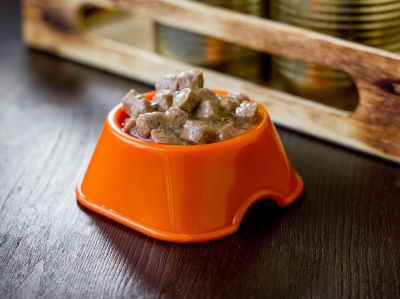
Due to the simple stomach of dogs, once the stomach is filled with food, it will unload within a few hours as food moves into the small intestine. Then the brain responds to hunger signals, which is why provides at least two meals per day[2].
Feeding a dog all it can eat at once is called ad labium or free choice feeding. This is not recommended as it can lead to obesity, binge eating, as well as orthopaedic problems, and diabetes.
There are some downsides of wet food as well which we should take into account. Here are some of them[3]:
- More expensive
- Less convenient to feed
- Spoils quickly if left out
- create more trash
- plaque
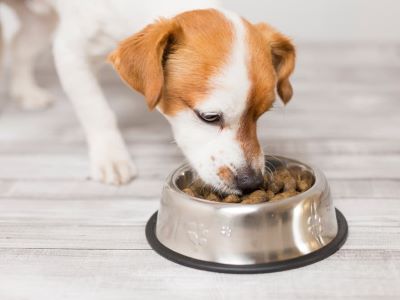
What Is the Difference Between Dry and Wet Food?
When contemplating how to choose dog food, understanding the distinctions between dry and wet food is essential.
Dry and wet dog food can provide nutritionally balanced diets, but the major difference is in the way they are processed, also some dry dog food diets also add live probiotics to aid in digestive and immune health.
A dry food might have around 10% moisture, while wet food might have something like 78% moisture, hence wet food has a much higher moisture content than dry food.
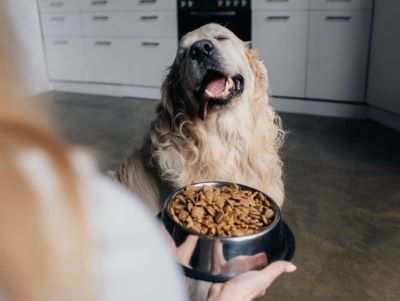
Both kinds of dog food are suitable choices, but each has its own advantages and flaws depending on the nutritional requirements of your pet.
“Mixing wet and dry dog food is another option that may provide the best of both worlds. However, it is very important to ensure you are still providing the proper daily feeding amount to prevent overfeeding“, suggests Dr. Heather Hoffmann from PetMD.
Remember, the key to your dog’s health and nutrition lies in finding the right balance in their diet, and the best wet dog food UK options can play a significant role in achieving that balance.
FAQs
How Much Wet and Dry Food to Feed a Dog?
Whether you want to feed dry kibble or wet canned food, there are different feeding amounts for each type of food. If you have a large breed of dog you may only need to give them 5 cups a day of dry kibble, but with wet canned food, you may have to give 4-5 cans per day.
What Are the Disadvantages of Wet Food?
Wet Food: Pros – increased palatability, contains more protein and fat, easier to eat. Cons – contributes to weight gain, spoilage, greater cost, and dental issues. Wet food is favourable toward smaller dogs.
How Do I Know If I Am Feeding My Dog Enough?
Low energy is a symptom of not eating enough. If they don’t have enough calories they will not have the energy to play. Their fur starts to fall out or they start gaining bald patches because they do not have the resources or energy to spare to grow their normally luscious coat. They will be more prone to illness.
How Often Do Dogs Get Hungry?
Dogs should eat at least two meals each day, about 12 hours apart. But a breakfast, lunch, and dinner schedule is an equally great option. If more than 12 hours elapse between meals, the stomach can become hyper acidic causing nausea.
What Is the Best Feeding Schedule for a Dog?
You can feed your dog one or two times a day. It’s best to do it twice daily at 8-12 hour intervals. If you’re doing it this way, split the suggested amount found on the bag or you’ll feed it double what it needs. The most common feeding frequency is feeding your dog twice a day, once in the morning and once in the evening. Dogs have a stomach structure that means they’ll get hungry between 8-10 hours after their last meal, so a breakfast/dinner schedule is better than breakfast/lunch or lunch/dinner or feeding them once a day.
Can Dogs Eat Bananas?
Yes, dogs can eat bananas. In moderation, bananas are a great low-calorie treat for dogs. They’re high in potassium, vitamins, biotin, fibre, and copper. They are low in cholesterol and sodium, but because of their high sugar content, bananas should be given as a treat, not part of your dog’s main diet.
Summary
Understanding the perfect bowl which will serve the balance in food is important, hence finding the perfect balance in the diet for your dog’s well is the key to their health and nutrition.
Try various options and figure out what your dog enjoys the best and what is nutritious for your dog, and if you feel confused at any point reach out to a vet for the proper guidance.
Reference:
- Colgate. (2022b). The advantages of wet dog food. Hill’s Pet Nutrition. -dog-food-benefits?- HillsPet.
- Feeding times and frequency for your dog | VCA Animal Hospital | VCA Animal Hospitals– VCA.
- What are the advantages and disadvantages of soaking dog food?– DCC Animal Hospitals.
